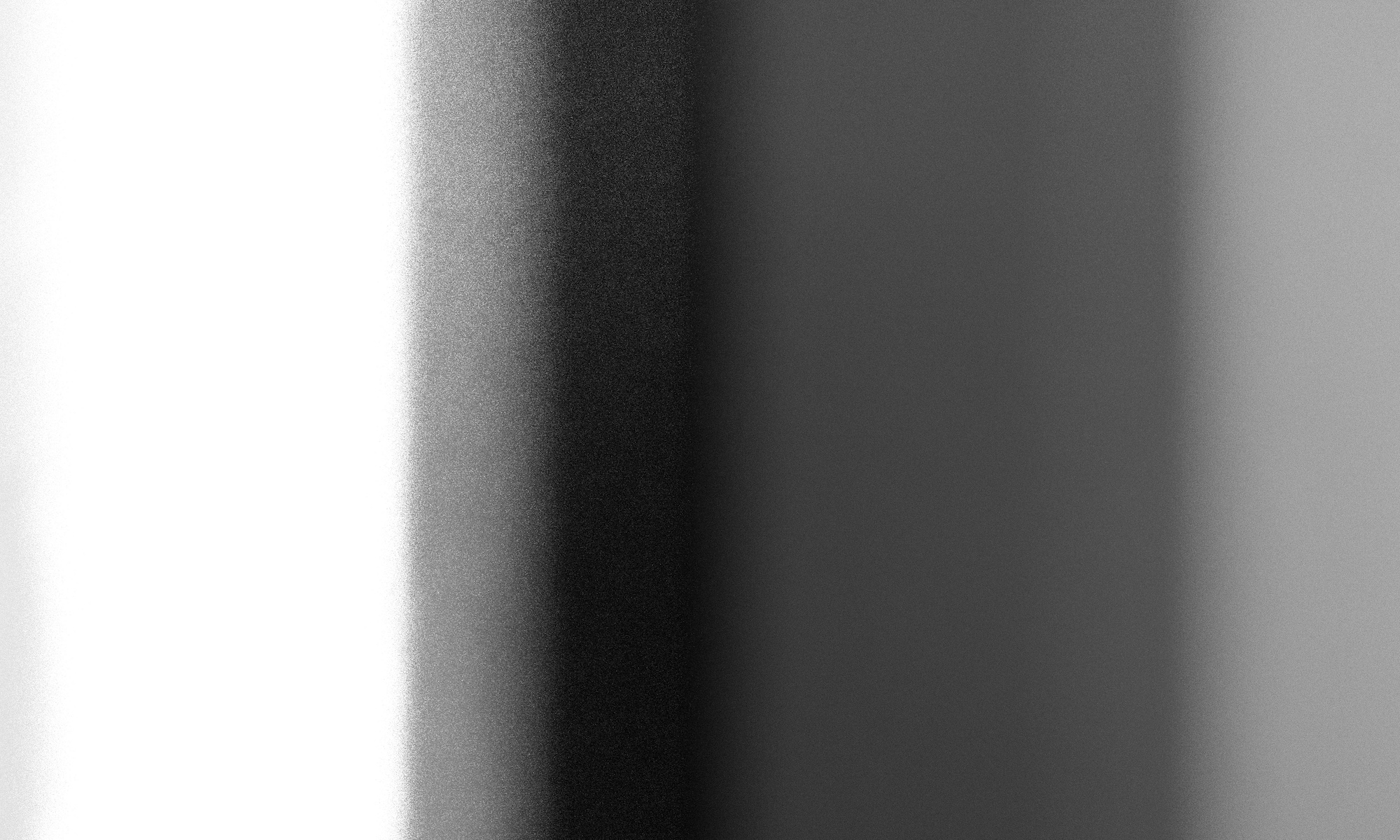
Belin’s recent commission for the V&A (for which she produced layered images using photographs from the V&A archive) has prompted me to revisit her work. My principal interest is to explore ways of incorporating portraits into my collaborative composites, layering them with built and natural environment images, artefacts, maps, archival images and so on. Whilst Belin’s practice is very different from my own (in most cases she uses professional models to pose for the portrait components, for instance, whereas I am working collaboratively with community members in the production of portraits and composites), it is instructive to explore her visual strategies and technical production processes.
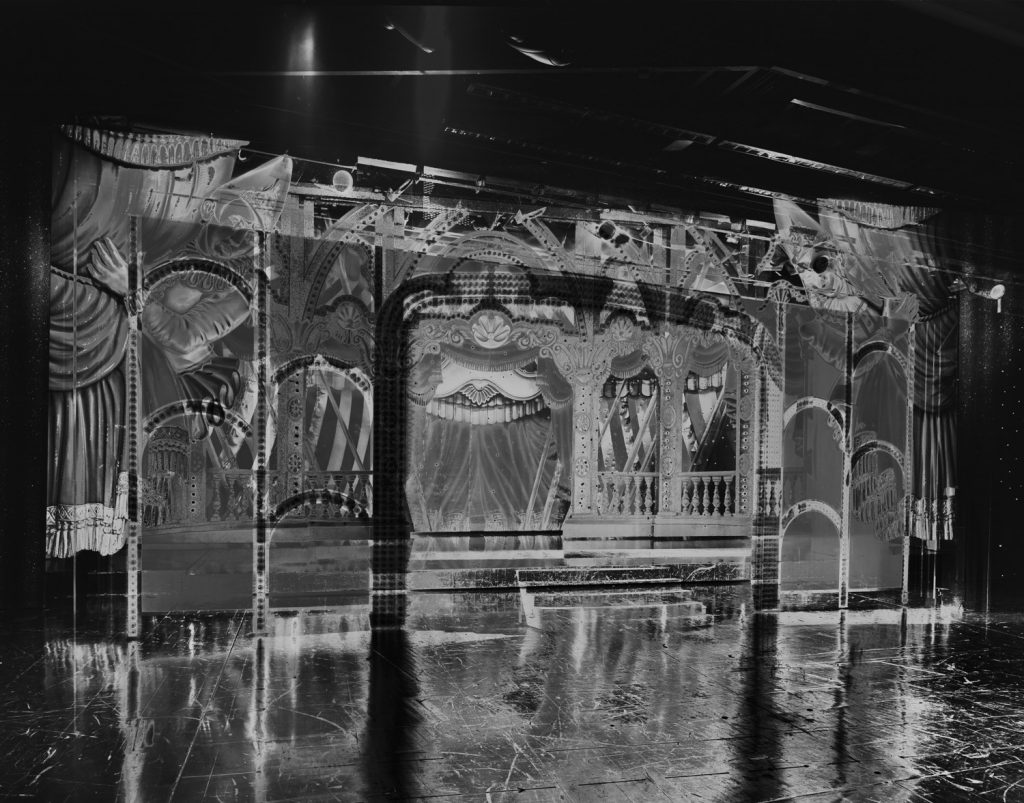
It is her earlier monochrome layering work that bears the closest resemblance to what I am doing. In Stage Sets (2011) she superimposes stage sets on urban street scenes, her first exploration of the landscape, also using solarisation in a similar way to her Interiors (2012) series (the process of conversion of channel mixed images to black and white produces a similar effect).
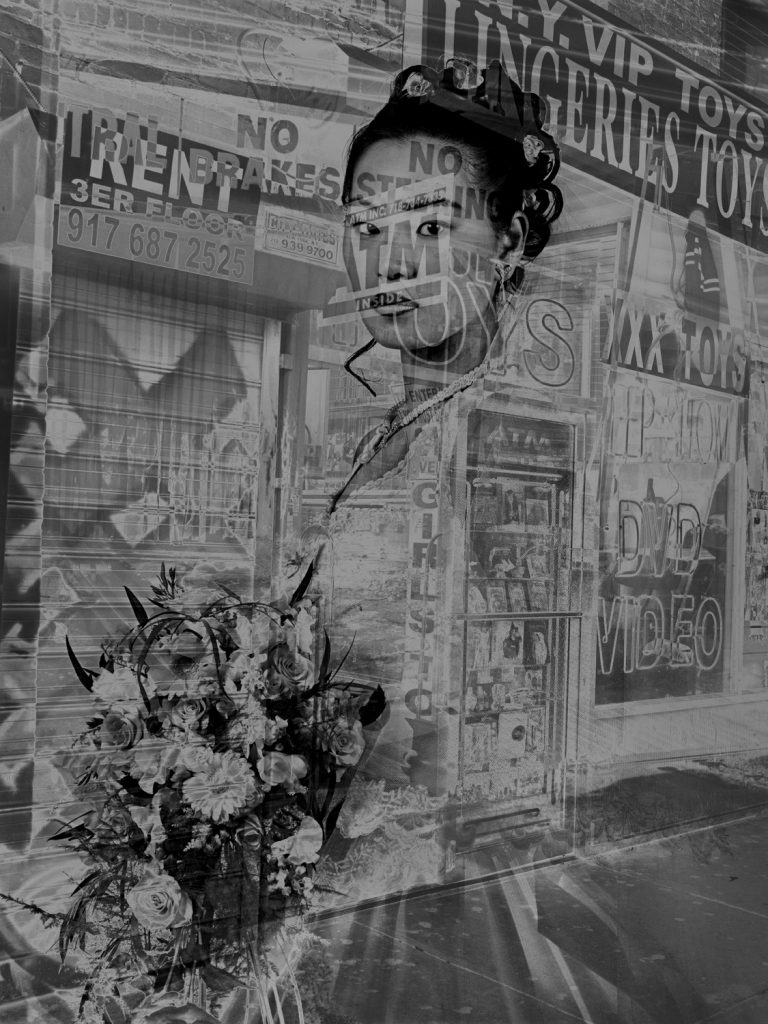
Brides (2012) combines earlier images of Moroccan Brides with street scenes, producing an interaction between the adornments of the brides with the complexity of shopfronts (with neon signs and text). Bob (2012) combines the human figure with theatrical prop store interiors and China Girls (2018) blends models with highly complex images of flowers and fruit, merging figure with background.
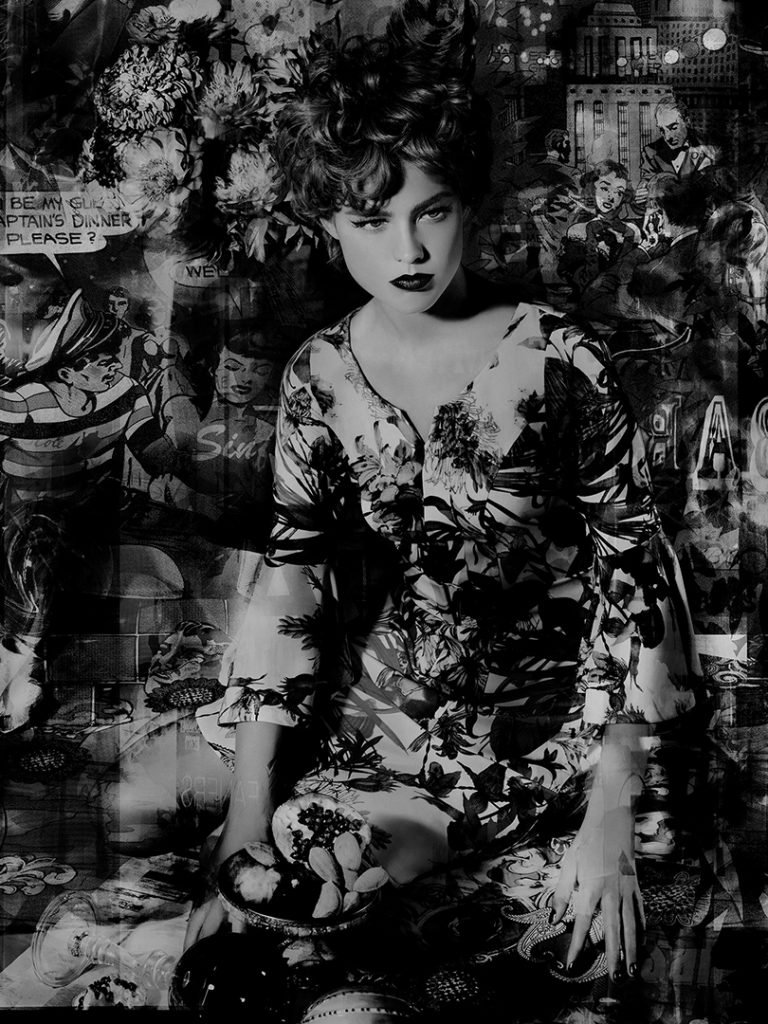
This work differs from my own not just in process and focus, but in the number of images combined (two in Belin’s case, three in my case) and the contrast (her images are high contrast, mine must lower in contrast). The size of her prints is also notable – each of the images in China Girls is 173 x 130 cm (in and edition of 6 with two artist’s prints). She is working with large format film, which is then scanned and manipulated.
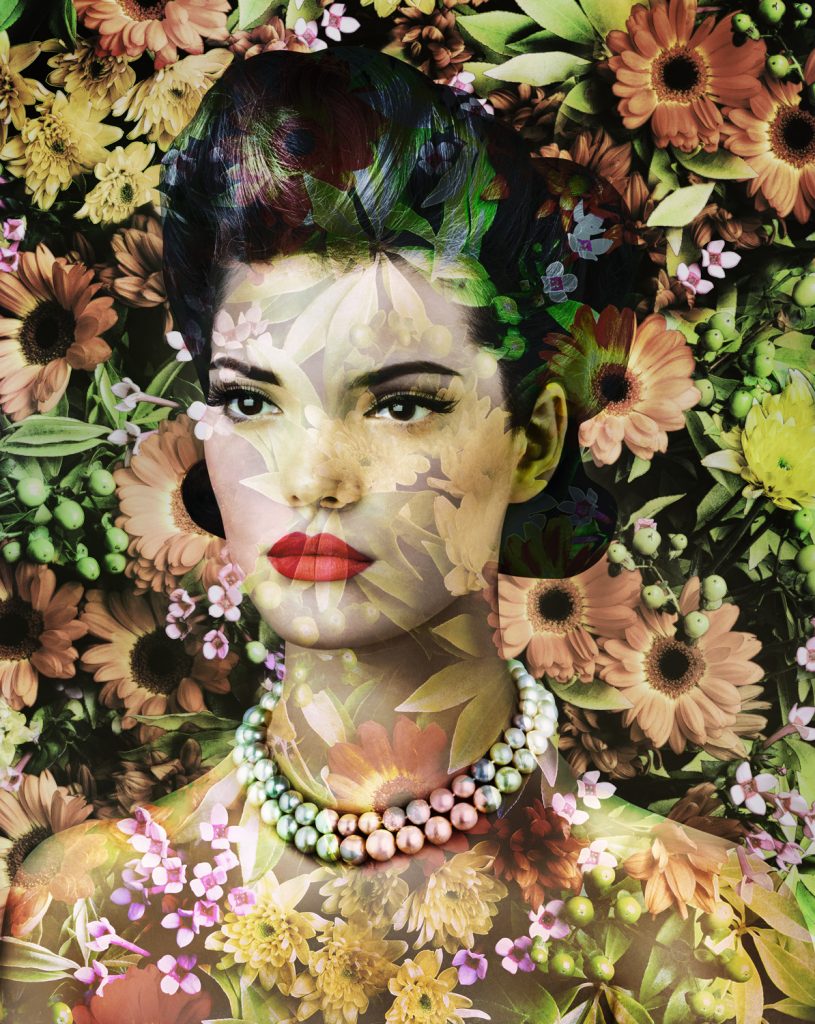
Of particular interest in the development of my own work is the production of colour prints in the series All Star (2016), Super Models (2015), Black-Eyed Susan II (2013) and Black-Eyed Susan I (2010). By following Welling’s channel mixing approach, colour in my images is an artefact (the initial images are black and white, which are fed into red, blue and green channels before being converted/manipulated to produce a final black and white image – the colour images thus bear no relation to the colour of the original objects).
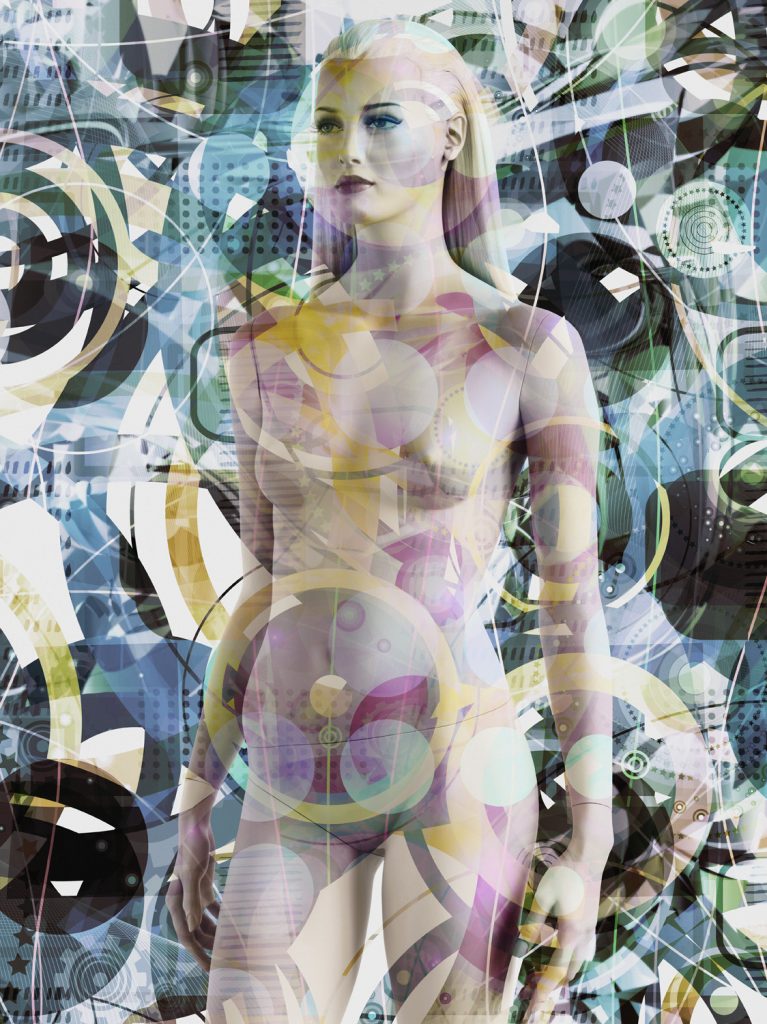
To achieve her effect, Belin is clearly superimposing in this work, which produces a ‘natural’ colour image, but does not allow the interaction of tones and entanglement of images achieved in the process I am using. As I am not able to process colour film myself, adopting Belin’s process would require me to shoot digitally, which will limit the size of image I can ultimately produce. Something to explore: colour images would be more engaging, I think, for some of the community projects. I also want to explore ways in which Belin has drawn out the faces of the models in China Girls (compare this with the images from Brides, which more closely resemble my initial composites with portraits, but again without the tonal interaction/interruption).
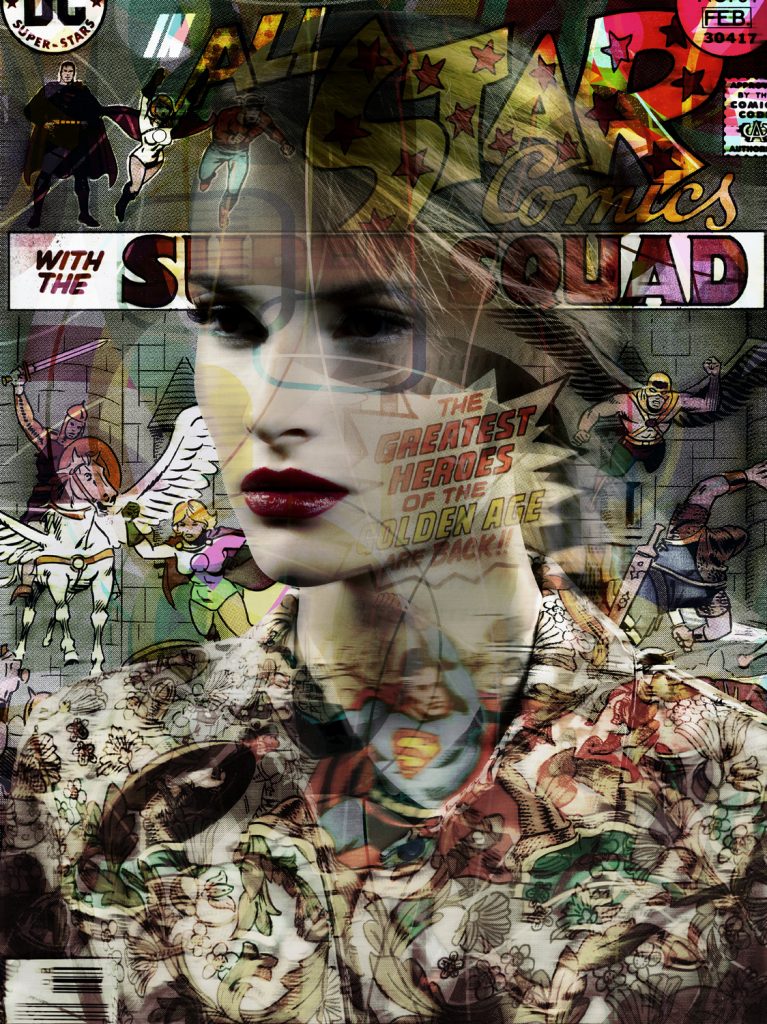
Lots to be learned from this work, both in relation to similarity in the use of layering/superimposition and the the underlying rationale for this (bringing things together in the frame which don’t physically and temporally co-exist in a given place, but which psychologically, socially and culturally do interact with each other in the development of a sense of ‘locatedness’ and becoming). My process is, however, is very different, and the underlying intent (and theory) is distinct. There is, however, no clear rationale for producing black and white images (apart from the evocation of a fiction, rather than a representation), so exploration of ways of producing large colour images would be productive.
Resources
Valérie Belin, https://valeriebelin.com/ [accessed 01.11.19]
Warner, M (2019) Valérie Belin’s reflections of the real and imaginary, British Journal of Photography, 22.10.19. Online at https://www.bjp-online.com/2019/10/valerie-belins-va/ [accessed 01.11.19]
